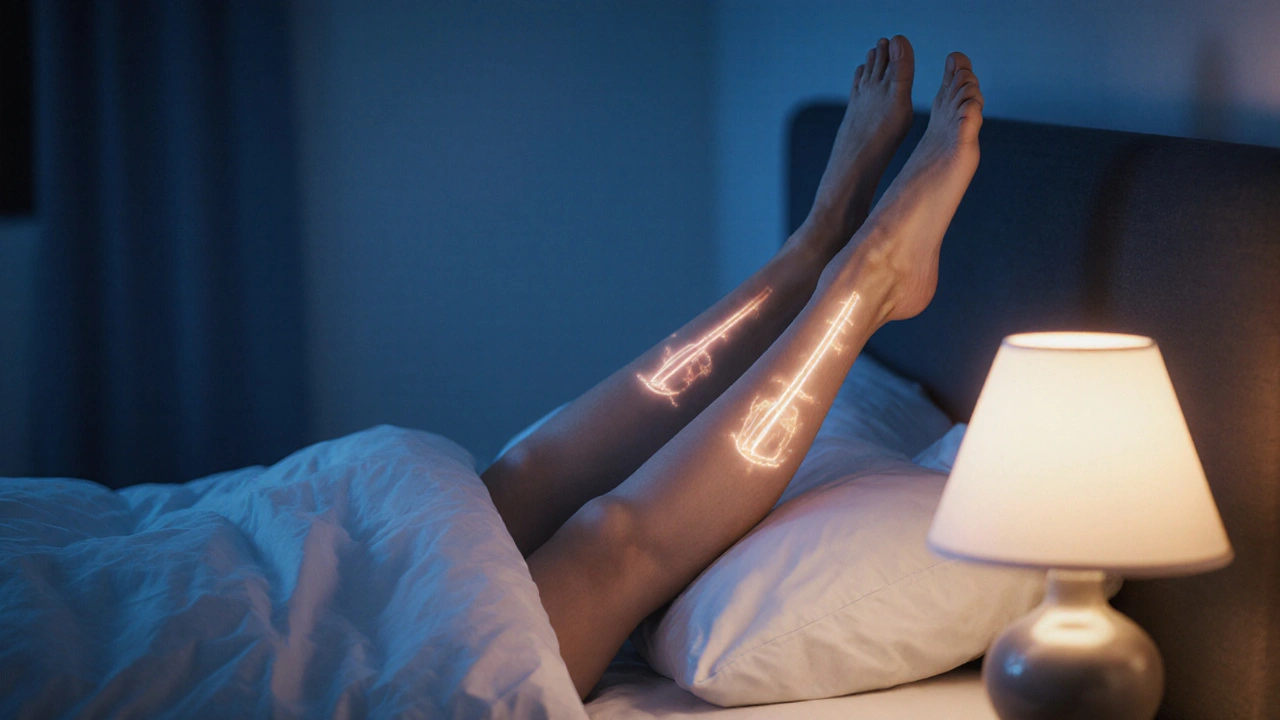RLS Sleep Tips: Simple Strategies to Quiet Restless Legs at Night
When dealing with Restless Leg Syndrome (RLS), a neurological condition that causes uncomfortable urges to move the legs, especially during rest. Also known as Willis-Ekbom disease, it often disrupts sleep and daytime focus.
Good sleep hygiene, the set of habits that promote consistent, restorative sleep is the first line of defense. Keeping a regular bedtime, dimming lights an hour before sleep, and avoiding caffeine after mid‑afternoon all reduce the leg‑movement triggers that flare up when the body winds down. Pair this with a cool, quiet bedroom and you create an environment where the nervous system can relax.
Key Factors That Influence RLS at Night
Research shows that iron deficiency, low ferritin levels in the brain and blood often amplifies RLS symptoms. A simple blood test can reveal whether supplementing iron could lower the frequency of leg twitches. When iron levels are adequate, many people find that dopaminergic medication, drugs that boost dopamine activity to calm nerve signals offers reliable relief, especially for moderate to severe cases.
For children, the picture shifts slightly. Kids may express RLS as frequent leg shaking or complaints of “tingly” feet, which can be mistaken for typical growing pains. In pediatric cases, gentle stretching before bedtime, a warm bath, and limiting screen time can calm the nervous system without jumping straight to prescription drugs. If symptoms persist, a pediatrician might explore low‑dose iron or the newest non‑dopaminergic options that have fewer side effects for youngsters.
Another practical tip involves timing of meals. Heavy or spicy dinners late at night can trigger digestive discomfort, which in turn aggravates leg sensations. Light, balanced meals with a focus on magnesium‑rich foods—like leafy greens, nuts, and legumes—help muscles stay relaxed. Hydration matters too; staying well‑hydrated reduces muscle cramps that can mimic or worsen RLS.
Movement isn’t the enemy. In fact, brief, purposeful walks or stationary cycling during the evening can reduce the buildup of restless sensations. The goal is to channel the urge to move into a controlled activity, then settle back into a calm state before lying down. Even a five‑minute leg‑stretch routine—ankle circles, calf raises, and hamstring stretches—can reset the nerve pathways that drive nighttime twitching.
While lifestyle tweaks address many mild cases, severe RLS may require a combination approach. Physicians often start with low‑dose dopamine agonists, monitor for augmentation (a worsening of symptoms over time), and then consider adding gabapentin or benzodiazepines for night‑time relief. Adjusting medication timing so the dose peaks during usual sleep hours maximizes benefit without causing daytime drowsiness.
Finally, keep a simple sleep diary. Jot down bedtime, any leg sensations, caffeine intake, and medication changes. Over a few weeks, patterns emerge, showing which habits most effectively quiet the legs. This data‑driven approach empowers you to fine‑tune your routine without endless guesswork.
Below you’ll find a curated set of articles that dive deeper into each of these topics—ranging from pediatric RLS signs to medication comparisons and practical home remedies. Use them as a toolbox to build your own personalized plan for calmer nights and brighter days.
Create a Restless Leg Syndrome Sleep Environment: Step‑by‑Step Guide
Learn how to set up a bedroom that soothes Restless Leg Syndrome. Follow step‑by‑step tips on mattress choice, temperature, lighting, supplements, and sleep hygiene for a calmer night.






